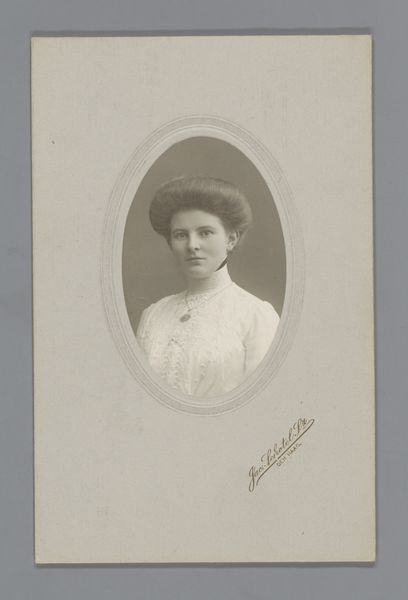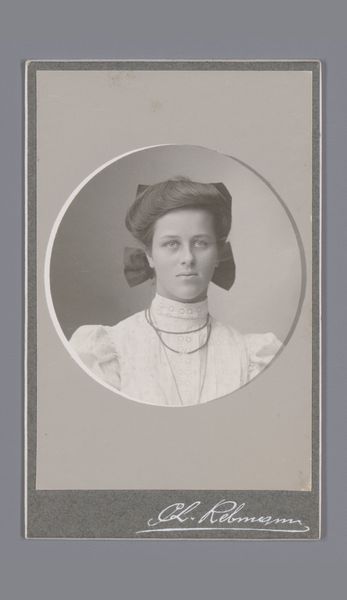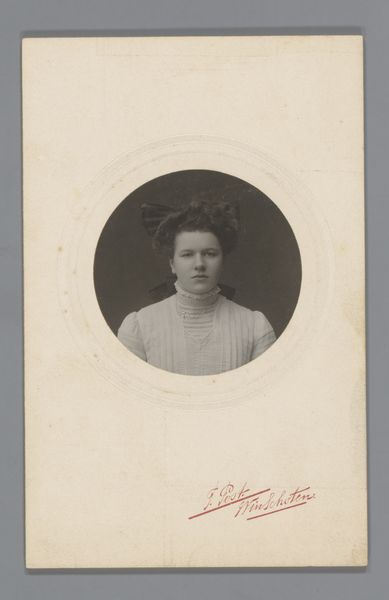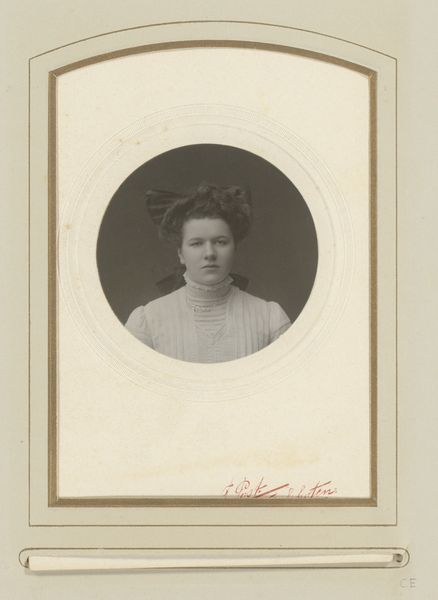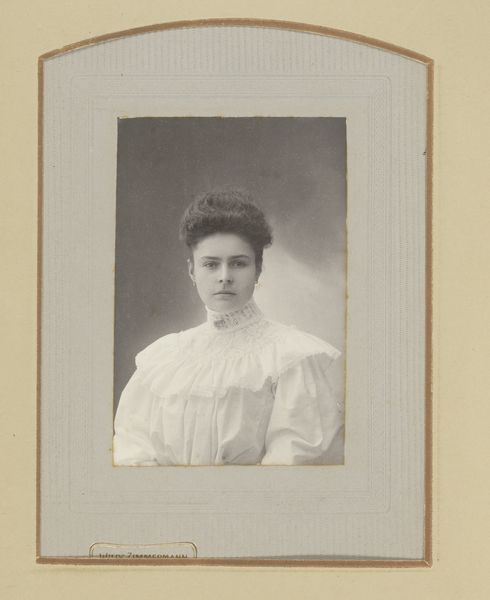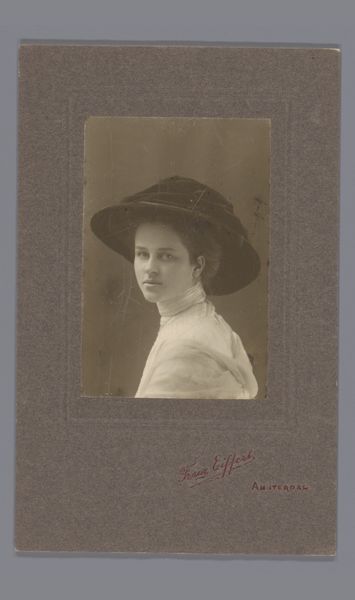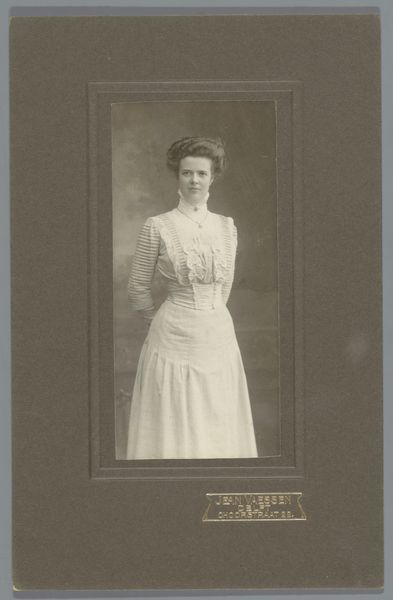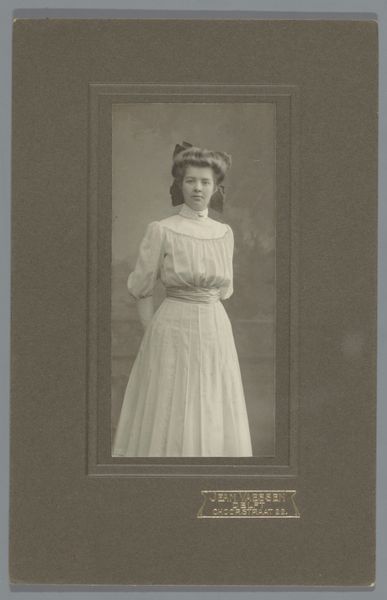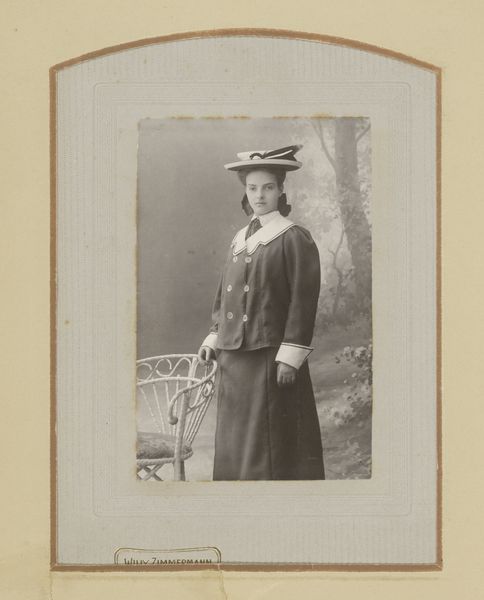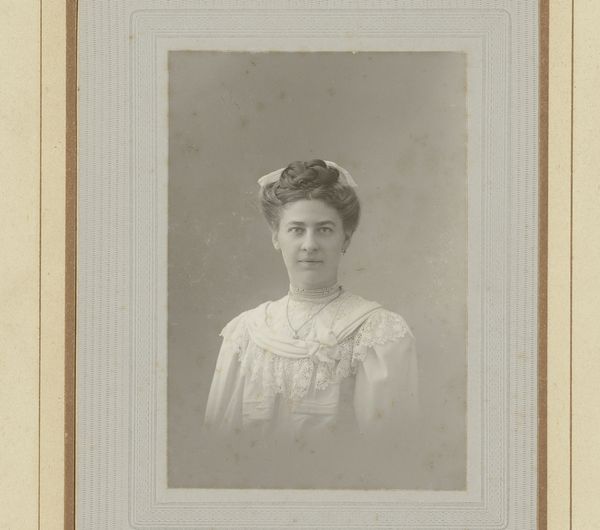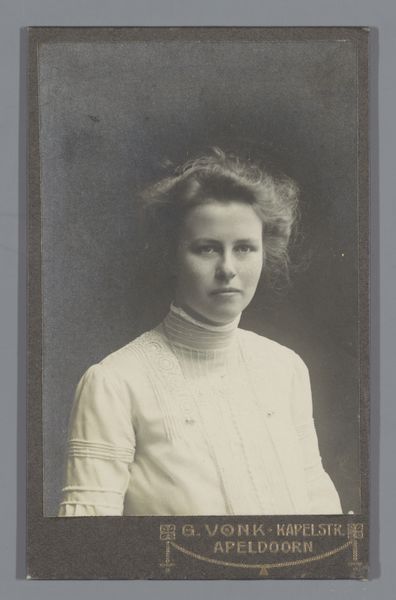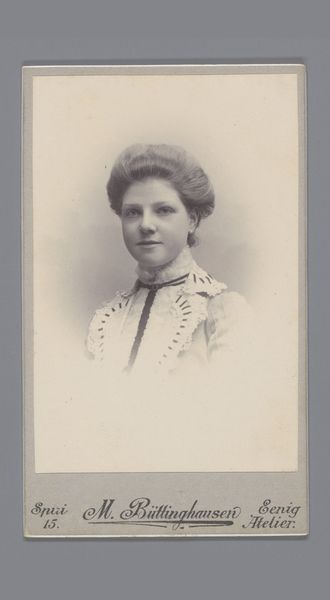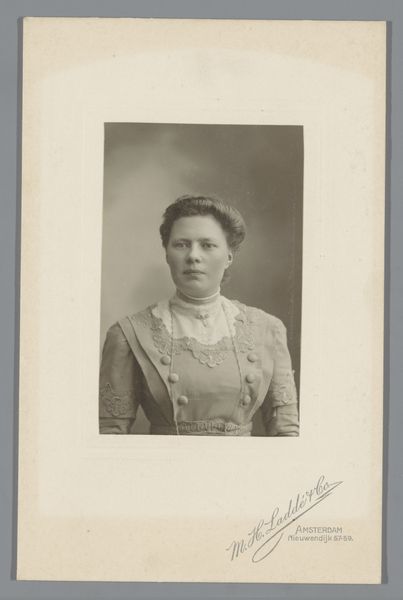
paper, photography, gelatin-silver-print
#
portrait
#
dutch-golden-age
#
paper
#
photography
#
gelatin-silver-print
#
paper medium
Dimensions: height 166 mm, width 105 mm
Copyright: Rijks Museum: Open Domain
Curator: This is a portrait of Lucie Keyser, taken sometime between 1880 and 1940 by Guillame Maximilien Zimmermann. The work is a gelatin silver print on paper, and you can find it here in the Rijksmuseum collection. Editor: It's ghostly, isn't it? That pale face against the muted background. The whole composition seems to be whispering secrets. There's a quietness, almost a melancholy. Curator: Indeed. Considering the era and medium, we might frame this within broader discussions about the emergence of photography as a tool for documenting bourgeois identity and social mobility. Think about who could afford to have their portrait taken and how they chose to represent themselves. Editor: I'm looking at her dress; it seems prim and proper. The light emphasizes the detail, but at the same time, it flattens her, if that makes sense? Curator: Yes, the flattening could speak to the limited artistic and social roles often assigned to women in that period. Consider Laura Mulvey's concept of the "male gaze" and how portraiture, even by a male photographer, might implicate power dynamics and gendered representation. Editor: Absolutely. I imagine her story. I feel that a certain degree of vulnerability comes through her guarded expression. Curator: Precisely, and from a postcolonial perspective, analyzing who is being portrayed and by whom is extremely important. How does this photograph conform to or challenge dominant societal ideas about beauty and virtue at the time? Editor: So true. It makes one think about the story beneath the surface, doesn’t it? Curator: Precisely. The formal elements intertwine with power dynamics. Reflecting on Zimmermann's other portraits might illuminate further trends regarding societal norms and historical perspectives on portraiture. Editor: It is fascinating how much a single captured image on paper can suggest and imply. And the shadows whisper. I could spend hours pondering over this image, really. Curator: It's through these detailed examinations, these nuanced questions, that art truly starts conversations, offering unique insights and critical dialogues about ourselves and the world.
Comments
No comments
Be the first to comment and join the conversation on the ultimate creative platform.
